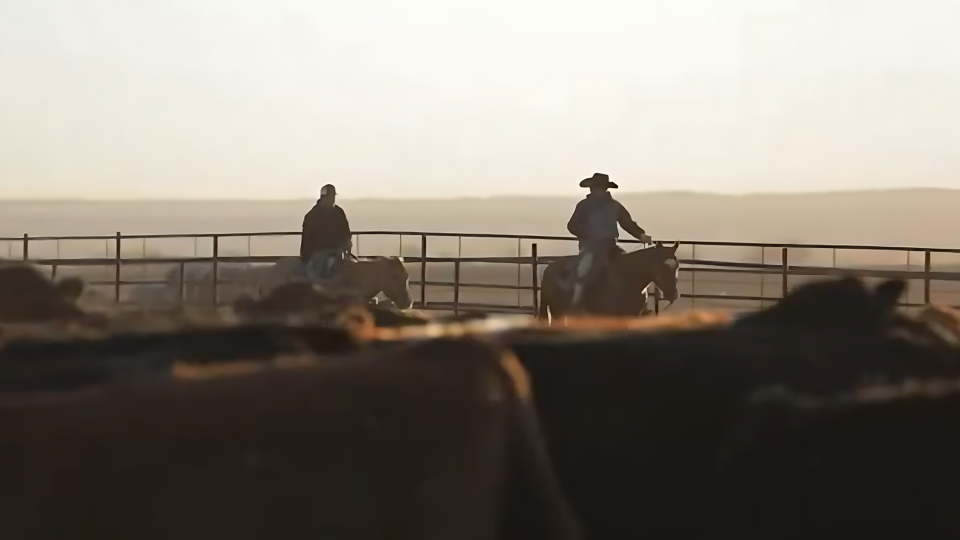BRD prevention starts with low-stress cattle handling
With a lifetime of experience observing cattle behavior and studying animal health, Dave Sjeklocha, D.V.M., beef technical services for Merck Animal Health, says it is clear to him that the more beef producers pay attention to animal welfare, the more they discover the profound effect it has on animal health.
“That stands true for bovine respiratory disease (BRD), one of the most common disease hurdles,” he says. “Good animal husbandry practices with a focus on minimizing or destressing cattle, coupled with a comprehensive vaccination program, is the first line of BRD defense.”
Ron Gill, Ph.D., is a professor and Extension livestock specialist at Texas A&M AgriLife Extension. He agrees, adding, “Anytime we stress cattle, whether it be from handling or another kind of stress, it’s going to cause animals to release corticosteroids and other factors that inhibit immune system function.”

He points out that anytime we stack stressors on top of one another, such as weaning and transportation, it causes the immune system to partially shut down. Dr. Gill explains, “The way we handle cattle through all phases, from cow-calf on up, will impact the immune response to vaccines or natural exposure.”
All vaccine labels read along the lines of being effective for the vaccination of healthy cattle for the disease specified. Dr. Sjeklocha says, “For the vaccine to be effective, the animal has to be healthy and in a physiological state to respond to the vaccine.”
Water and nutrition are critical
“Water accounts for at least 50% of your cattle’s live weight,” according to Mark Johnson, Ph.D., Oklahoma State University Extension beef cattle breeding specialist. “Water is required to transport nutrients through the blood, maintain cellular structure, regulate temperature and much more. For livestock to maximize feed intake and production, they need daily access to palatable water of acceptable quality and quantity.
“Water is also important for cattle dealing with stress. Insufficient water intake lowers cattle performance more dangerously than any other nutrient deficiency,” Johnson emphasizes. “Dehydration in cattle severely weakens the ability of respiratory organs to resist and expel disease-causing organisms. As well, hearing and sight can be adversely affected by dehydration.”
Make sure the cattle have adequate nutrition. “If an animal is in a decreased body condition due to nutritional status, its immune system can’t respond as well to the vaccine challenge,” he explains.
Low-stress hauling
According to Dr. Sjeklocha, it’s always good to follow author and businessman Steven Covey’s advice and begin with the end in mind. For beef producers, the end to keep in mind is the consumer who will enjoy the results of the hard work that goes into making a great beef-eating experience.
That’s why using low-stress cattle-handling techniques is essential anytime you’re working cattle, and especially when loading them on a gooseneck or cattle pot.
“As we know from our BQA injection-site training, some of the scars we put on cattle last their whole life in the muscle,” explains Dr. Sjeklocha. “If we put a severe bruise on a calf at a young age, that bruise may develop a scar. And that scar will continue to affect the tenderness of the meat and be with that calf for the rest of its life.”
For example, say you’re hauling pairs to another pasture and you get down to the last couple loads. “You may have a few more than you can comfortably fit in the trailer,” Dr. Sjeklocha says. “The temptation is to load an extra five or 10 so you don’t have to make an extra trip.”
That puts a lot of pressure on the cattle, both in added stress and potential for bruising. He reminds, “Anytime we’re on the road with our livestock trailers, we’ve got to keep in mind that’s a time the public sees cattle handling. Your truck and trailer are a moving billboard for your operation and the reputation of the cattle business.”
Setting up the receiving pen
Dr. Sjeklocha’s “prescription” to protect cattle from stress caused by transportation and unloading into an unfamiliar environment includes:
- Prepare the receiving pen with all the basics in place — bedding, clean water, hay and perhaps some ration in the bunk.
- Use calm, quiet handling methods during unloading and while putting calves into properly prepared pens, allowing them to settle in and rest.
- Consult your veterinarian for vaccine product and schedule recommendations. Calves should be eating and drinking for a proper immune response to vaccines.
Merck Animal Health encourages producers to make full use of BQA certification for workforce training. Merck Animal Health sponsors the American National CattleWomen’s WIRED programs, which offer hands-on education and BQA certification opportunities.
Find more content for your beef operation.
